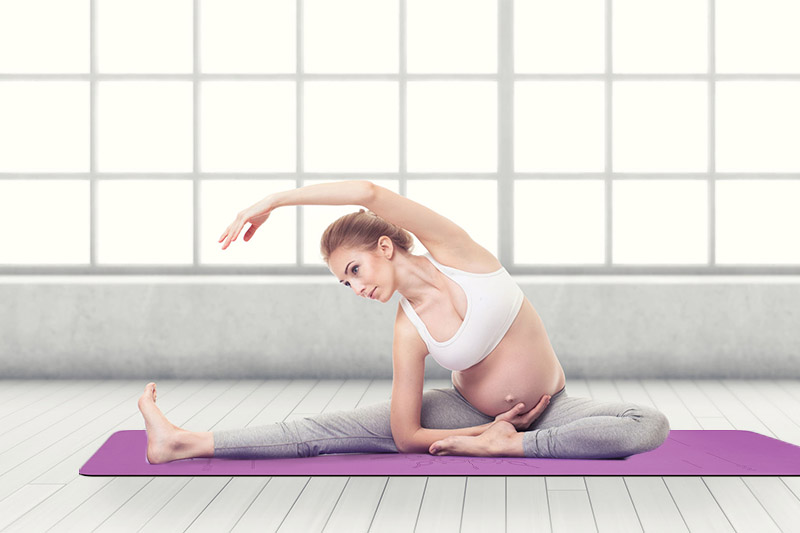
Pregnant women get a lot of benefits from yoga like strength and flexibility.
By doing yoga, pregnant women can increase muscle strength and tone. It also enhances the equilibrium of the body and improves muscle flexibility and agility as a whole. At the same time, it stimulates the hormonal glands, improves blood circulation, and maintain control of breathing.
In addition, practicing yoga can help in postpartum abdominal reshaping. All pregnant women can practice a variety of yoga poses, but it must be adapted to need and comfort of each individual.
Benefits of yoga for pregnant women
It is of interest to note that yoga is not a way to make pregnancy and childbirth safer. Yoga only helps pregnant women to train appropriately throughout the course of pregnancy. "Giving birth" consumes a lot of energy, so before birth, a vast majority of pregnant women may feel fear and anxiety of the labor. This is a normal phenomenon. Yoga can make it easy and help keep pregnant women keep peace of mind.
During pregnancy, expectant mothers have to be very careful to protect the fetus, but they also cannot be too careful and stop moving. Moderate exercise during pregnancy not only helps to enhance the fitness of expectant mothers, controls the body shapes, but also helps them to successfully deliver the baby.
Pregnant women may become stressed during pregnancy due to the body's changes especially due to the added stress on the back. Yoga practice can balance the growing belly and maintain good posture. By stretching and building a strong body helps to open the pelvis before delivery. By regulating the pelvic bone, it can lead to better control of delivery, reduce complications and speed postpartum recovery.
Through the extension movements of yoga, such as bow-cat in respiratory, side extension and others, it not only relieve tensed and aching muscles, yoga breathing can help rib stretch and strengthen the muscles of the chest and back flexibility, thus allowing the mother to maintain emotional stability, relaxed muscles and regulated blood pressure.
Alleviating the expectant mothers’ back pain
In addition to back pain, many pregnant mothers often feel out of breath, and also get constipation. All of these can be improved by prenatal yoga.
The gentle prenatal yoga can increase the functions of heart and lung, improve blood circulation and metabolism, reduce tiredness and asthma caused by increased oxygen demand due to pregnancy. Due to the growth of the baby, a lot of mothers’ uterus press against the gastrointestinal tract causing upstream of the oesophagus or constipation. Many prenatal yoga moves can promote gastrointestinal peristalsis which helps bowel movement and expulsion, and reduce bloating and constipation problems.
Prenatal Yoga Safety Precautions
Pregnant women in the first trimester (1-3 months) should rest totally. During the second trimester (3 -7 months), prenatal yoga is now appropriate to help in childbirth and child development.
In the second trimester, the foetus has stabilized, so pregnant women can practice according to their own personal fitness and exercise in the past. They can increase the amount of exercise, including prenatal yoga.
When the pregnant woman do yoga exercise, the heart rate cannot be too fast, not exceeding maximum heart rate = (220-age)
*60% of pregnant women in this exercise may experience dizziness, nausea, or fatigue. If it occurs, they should cease immediately.
If abdominal pain or bleeding occurs, go for check-up in hospital.
When practicing yoga, the maternity dress should be loose and comfortable, and the shoes to fit lightly; replenish water constantly to prevent collapse; keep warm and ensure that the practice venue has good ventilation.
Each individual is different, so do consult the obstetrician before arranging any appropriate exercise.